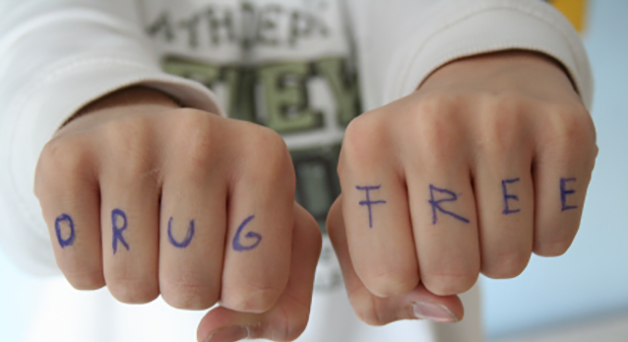Youth who receive special education services under the Individuals with Disabilities Education Act (IDEA 2004) and especially young adults of transition age, should be involved in planning for life after high school as early as possible and no later than age 16. Transition services should stem from the individual youth’s needs and strengths, ensuring that planning takes into account his or her interests, preferences, and desires for the future.
Substance Use/Misuse

Substance abuse and problematic patterns of substance use among youth can lead to problems at school, cause or aggravate physical and mental health-related issues, promote poor peer relationships, cause motor-vehicle accidents, and place stress on the family. They can also develop into lifelong issues such as substance dependence, chronic health problems, and social and financial consequences.1
Substance abuse is the harmful pattern of using substances—such as tobacco, alcohol, illicit drugs, and prescription drugs—leading to impairment or distress with one or more of the following behaviors:
- Recurrent substance use resulting in failure to fulfill major responsibilities at work, school, or home such as repeated absences, suspension, and expulsion
- Recurrent substance use in situations where it is physically dangerous, such as driving while impaired
- Recurrent substance-related legal problems, such as arrests for disorderly conduct that are substance-related
- Continued substance use despite having persistent or recurring social or personal problems caused or worsened by substance use2
One of the most highly abused substances among youth in the U.S. is alcohol.3 Youth engage in binge drinking, a pattern of drinking that elevates the blood alcohol concentration to 0.08 percent or above, more than adults do.4 This can lead to risky and potentially harmful behaviors, and many times substance abuse (60-75 percent of youth with substance abuse problems) co-occurs with mental health disorders.
Substance use, abuse, and dependence can negatively impact every aspect of an individual’s life. Child-serving systems need to intervene early in the lives of youth to prevent or treat abuse, support young people, and provide them with the tools to choose the right path.
1 Department of Justice, 1998
2 American Psychiatric Association, 2000
3 Johnston, O’Malley, Bachman, & Schulenberg, 2012
4 For the typical adult, this pattern corresponds to consuming five or more drinks [men], or four or more drinks [women], in about 2 hours.
Other Resources on this Topic
Agencies
Announcements
Collaboration Profiles
Data Sources
Departments
Feature Articles
Programs
Publications
Resources
Technical Assistance
Tools & Guides
Training Resources
Videos & Podcasts
Websites
Youth Topics
Youth Briefs
Research links early leadership with increased self-efficacy and suggests that leadership can help youth to develop decision making and interpersonal skills that support successes in the workforce and adulthood. In addition, young leaders tend to be more involved in their communities, and have lower dropout rates than their peers. Youth leaders also show considerable benefits for their communities, providing valuable insight into the needs and interests of young people
Statistics reflecting the number of youth suffering from mental health, substance abuse, and co-occurring disorders highlight the necessity for schools, families, support staff, and communities to work together to develop targeted, coordinated, and comprehensive transition plans for young people with a history of mental health needs and/or substance abuse.
Nearly 30,000 youth aged out of foster care in Fiscal Year 2009, which represents nine percent of the young people involved in the foster care system that year. This transition can be challenging for youth, especially youth who have grown up in the child welfare system.
Research has demonstrated that as many as one in five children/youth have a diagnosable mental health disorder. Read about how coordination between public service agencies can improve treatment for these youth.
Civic engagement has the potential to empower young adults, increase their self-determination, and give them the skills and self-confidence they need to enter the workforce. Read about one youth’s experience in AmeriCorps National Civilian Community Corps (NCCC).
Marijuana is the most abused illegal substance among youth. By the time they graduate high school, approximately 46% of teens will have tried marijuana at least once.






